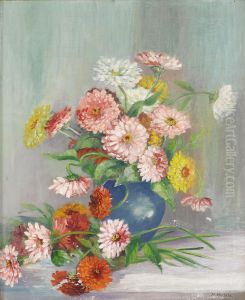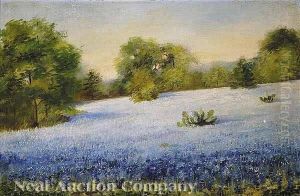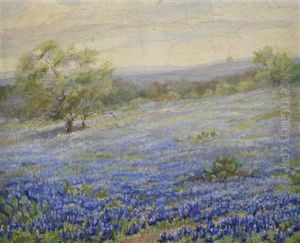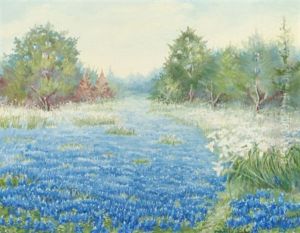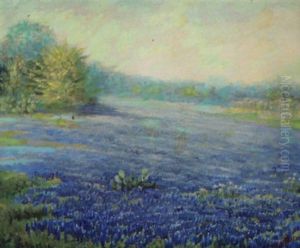Nannie Zenobia Huddle Paintings
Nannie Zenobia Huddle, born in 1860, was an American artist known for her remarkable contributions to the art world during her lifetime. Huddle's work is characterized by its detailed realism and vibrant colors, often focusing on floral subjects, landscapes, and occasionally portraits. She was part of a generation of female artists who sought to establish themselves in a predominantly male-dominated field, making significant strides for future women in art.
Huddle's early life was marked by an evident passion for art, leading her to pursue formal training. Despite the societal expectations of women during the 19th century, she was determined to hone her craft. She studied under prominent artists of the time, which helped refine her technique and vision. Huddle's dedication to her art was evident in the meticulous detail and the lively essence captured in her paintings.
Throughout her career, Nannie Zenobia Huddle participated in various exhibitions, gaining recognition and accolades for her work. Her paintings were celebrated for their intricate detail, exquisite color palette, and the ability to evoke emotion. Huddle's art was not only a reflection of her technical skill but also her keen observation of the world around her.
Living through the turn of the century, Huddle witnessed significant changes in the art world, from the impact of Impressionism to the rise of Modernism. However, she remained true to her style, focusing on the beauty of her immediate environment and the richness of natural landscapes and scenes from daily life. Her work serves as a testament to her skill and dedication to her craft.
Nannie Zenobia Huddle passed away in 1944, leaving behind a legacy that has inspired future generations of artists. Her contributions to American art have been recognized through posthumous exhibitions and the continued appreciation of her work by art historians and collectors alike. Huddle's life and art embody the struggle and triumph of female artists in the late 19th and early 20th centuries, marking her as a significant figure in the history of American art.
